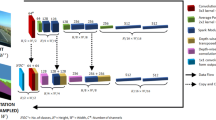Abstract
Recently, an ever-growing focus and attention is given to accessibility and enabling technologies for people with disabilities. In the mobility field, people with motor skill impairments exploit power wheelchairs to move in indoor and outdoor scenarios. AI-Drive aims to design an assistive power wheelchair for outdoor use, providing obstacle detection and avoidance in urban scenarios, leveraging low-cost digital cameras and artificial intelligence. This paper focuses on the implementation of a convolutional neural network for semantic segmentation of urban scenes, to detect obstacles in an outdoor setting. A U-Net-like architecture was trained on GPU over multiple datasets, representative of the final environment. The selected trained network was then customised to perform inference on the Nvidia Jetson Nano hardware accelerator, to be mounted directly on the wheelchair. The resulting model achieves an accuracy of around 85% and inference time of 35 ms, thus providing a concrete solution towards the target assisted power wheelchair.
Access this chapter
Tax calculation will be finalised at checkout
Purchases are for personal use only
Similar content being viewed by others
References
Behroozpour, B., Sandborn, P.A., Wu, M.C., Boser, B.E.: Lidar system architectures and circuits. IEEE Commun. Mag. 55(10), 135–142 (2017)
Cimurs, R., Lee, J.H., Suh, I.H.: Goal-oriented obstacle avoidance with deep reinforcement learning in continuous action space. Electronics 9(3), 411 (2020)
Cordts, M., et al.: The cityscapes dataset for semantic urban scene understanding. In: Proceedings of the IEEE Conference on Computer Vision and Pattern Recognition, pp. 3213–3223 (2016)
Everingham, M., Eslami, S.A., Van Gool, L., Williams, C.K., Winn, J., Zisserman, A.: The pascal visual object classes challenge: a retrospective. Int. J. Comput. Vis. 111(1), 98–136 (2015)
Falzone, G., Giuffrida, G., Panicacci, S., Donati, M., Fanucci, L.: Simulation framework to train intelligent agents towards an assisted driving power wheelchair for people with disability. In: Proceedings of the 13th International Conference on Agents and Artificial Intelligence - Volume 1. ICAART, SciTePress (2021)
Leaman, J., La, H.M.: A comprehensive review of smart wheelchairs: past, present, and future. IEEE Trans. Hum. Mach. Syst. 47(4), 486–499 (2017)
Lin, T., et al.: Microsoft COCO: common objects in context. arXiv arXiv:1405.0312 (2014)
Neuhold, G., Ollmann, T., Rota Bulo, S., Kontschieder, P.: The Mapillary Vistas Dataset for semantic understanding of street scenes. In: Proceedings of the IEEE International Conference on Computer Vision, pp. 4990–4999 (2017)
Panicacci, S., et al.: Empowering deafblind communication capabilities by means of AI-based body parts tracking and remotely controlled robotic arm for sign language speakers. In: Saponara, S., De Gloria, A. (eds.) ApplePies 2019. LNEE, vol. 627, pp. 381–387. Springer, Cham (2020). https://doi.org/10.1007/978-3-030-37277-4_44
Ronneberger, O., Fischer, P., Brox, T.: U-Net: convolutional networks for biomedical image segmentation. In: Navab, N., Hornegger, J., Wells, W.M., Frangi, A.F. (eds.) MICCAI 2015. LNCS, vol. 9351, pp. 234–241. Springer, Cham (2015). https://doi.org/10.1007/978-3-319-24574-4_28
Şahin, H.İ., Kavsaoğlu, A.R.: Autonomously controlled intelligent wheelchair system for indoor areas. In: 2021 3rd International Congress on Human-Computer Interaction, Optimization and Robotic Applications (HORA), pp. 1–6. IEEE (2021)
Simpson, R., LoPresti, E., Cooper, R.: How many people would benefit from a smart wheelchair? J. Rehabil. Res. Dev. 45(1), 53–71 (2008)
US Department of Health and Human Services: What are some types of assistive devices and how are they used? (2018). https://www.nichd.nih.gov/health/topics/rehabtech/conditioninfo/device. Accessed June 2021
Author information
Authors and Affiliations
Corresponding author
Editor information
Editors and Affiliations
Rights and permissions
Copyright information
© 2022 The Author(s), under exclusive license to Springer Nature Switzerland AG
About this paper
Cite this paper
Giuffrida, G., Panicacci, S., Donati, M., Fanucci, L. (2022). Assisted Driving for Power Wheelchair: A Segmentation Network for Obstacle Detection on Nvidia Jetson Nano. In: Saponara, S., De Gloria, A. (eds) Applications in Electronics Pervading Industry, Environment and Society. ApplePies 2021. Lecture Notes in Electrical Engineering, vol 866. Springer, Cham. https://doi.org/10.1007/978-3-030-95498-7_14
Download citation
DOI: https://doi.org/10.1007/978-3-030-95498-7_14
Published:
Publisher Name: Springer, Cham
Print ISBN: 978-3-030-95497-0
Online ISBN: 978-3-030-95498-7
eBook Packages: EngineeringEngineering (R0)




